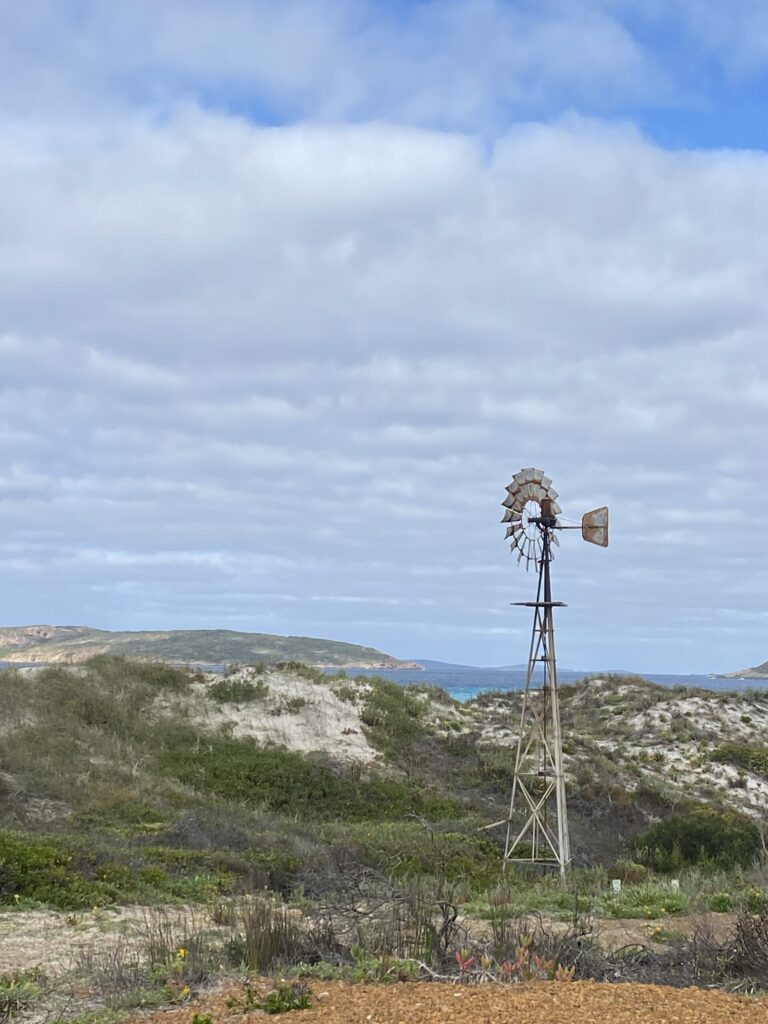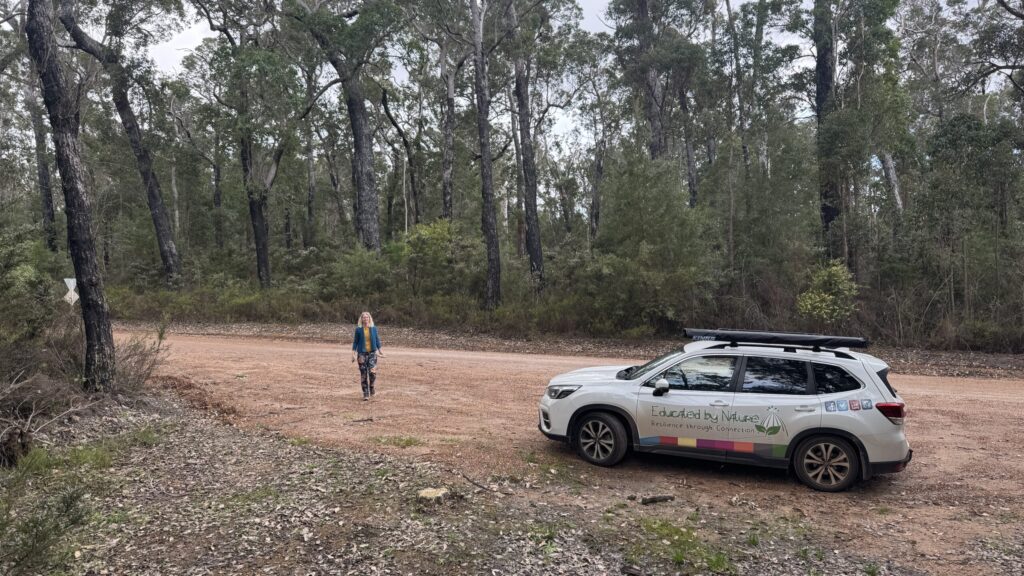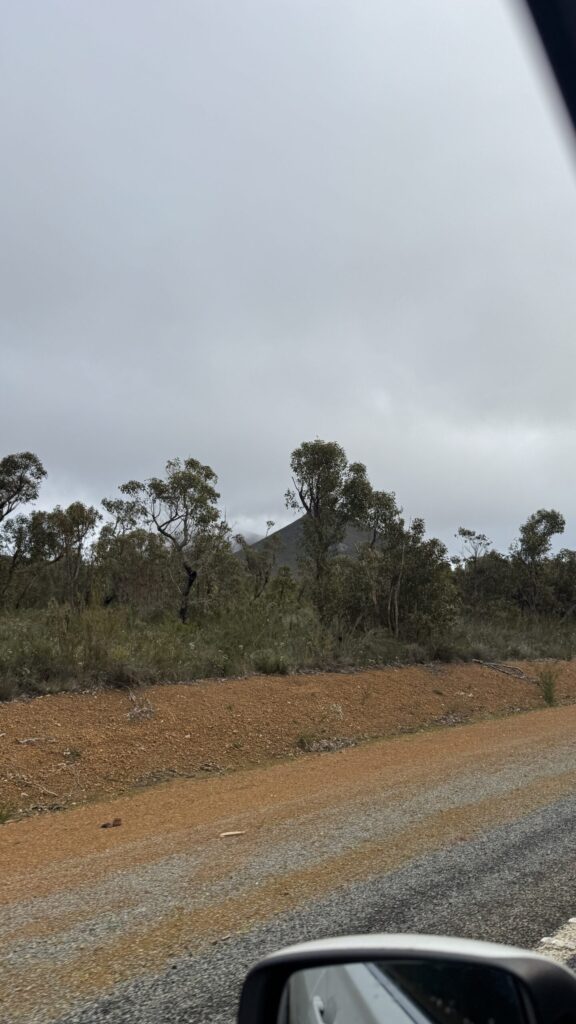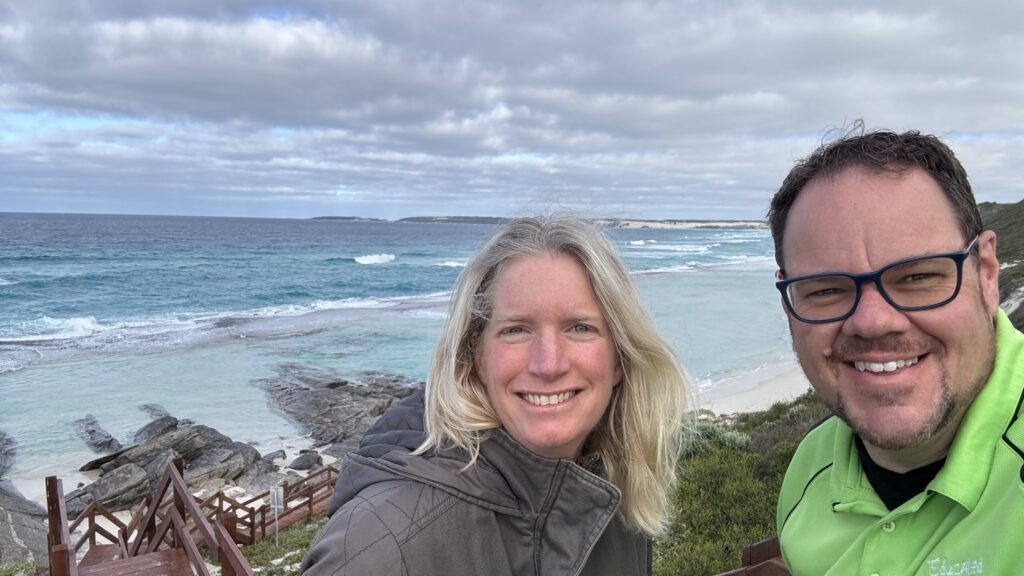On the long stretches of road that wind through the South West of Western Australia, Trudi and I found ourselves playing a simple game. We call it “Windmill.” The rules are easy – spot a windmill on the landscape and call it out before the other person does. Points accrue, laughter erupts, and time slips by. But as the kilometres rolled on, we noticed something intriguing about our game. Trudi rarely called out “windmill,” but she was lightning-quick at spotting nests tucked into roadside trees. Her eyes had been trained to find the subtle, natural traces of life rather than the bold, human-made silhouettes on the horizon.
This small game became a living metaphor. What do we see first? What do we value? What have our senses been trained to notice?
Shifting Awareness – Human-Made vs. Natural Features
As we reflected, we realised that most of us in modern life are attuned to human-made features. We are primed to navigate roads, petrol stations, billboards, and windmills. Yet, for most of human history, our survival depended on reading the natural world. We would have been scanning the canopy for nests, movement, colour shifts, water sources, and animal trails.
This difference speaks to something deeper about how our brains filter sensory input. In occupational therapy, practitioners often describe how the sensory system organises and prioritises stimuli from the environment. When a child or adult spends time immersed in natural settings, their sensory integration shifts. They become better at noticing subtle sounds, textures, and patterns – not just the obvious, loud, or brightly coloured signals.


A Personal Practice in Attention
Trudi shared with me recently that over the last eight years she has been consciously training her own attention. She’s noticed in herself a tendency to drift into inner thought or overlook small details, and has worked intentionally to counter this. Through working with Jon Young’s 8 Shields connection framework, she’s seen her skills grow. She’s become more adept at spotting the natural world’s quiet signatures – a shifting birdcall, a hidden track, a buzzing beehive high in a tree. Yet, as our car game revealed, her sensitivity still tilts toward the natural, not the human-made.
Listening to Trudi’s reflection reminded me how closely this personal practice mirrors what our programs at Educated by Nature invite for children, educators, and parents: slowing down, noticing, and training the senses to attune to the environment as a whole system rather than a fragmented backdrop.
The Science of Connection – Why This Matters
Jon Young’s research and teachings on the 8 Shields model (of Deep Nature Connection) highlight that connection practices (or Core Routines) – sit spots, bird language, storytelling, and sensory mapping – re-pattern the nervous system. They open awareness, build neuroplasticity, and deepen a sense of belonging. Likewise, occupational therapy research on sensory processing shows that diverse, textured, and meaningful sensory experiences support attention regulation, body awareness, and resilience. “When we ‘gameify’ noticing, as we did on our road trip, we create a playful practice field for this skill. For children especially, practising noticing natural features can enhance attention regulation, support sensory processing and integration, and promote cognitive functions like planning, memory, and problem-solving — capacities linked to increased engagement, emotional wellbeing, and restoration of focus in natural environmentsand. It nurtures the kind of deep focus that our fast-paced world erodes.
From Roadside Game to Daily Life
This reflection didn’t begin with a road trip game. For years we’ve been inviting ourselves and our communities to slow down and ask: what do we notice first? What have we been trained to see? How can we reclaim the skill of noticing the wild, subtle and living world that holds us? The game simply gave us another window into that practice – a playful reminder of how our senses lean toward some elements and overlook others.
Next time you’re outdoors – walking through your neighbourhood, sitting at a bus stop, hiking a trail, or even driving across Country – try attuning your awareness. Let your mind wander beyond the obvious. Notice nests, wildflowers, cloud shapes, insects at work, the pattern of bark on a tree, or the hidden tracks of animals. Feel how your brain shifts as you widen your field of attention. This is not just a game; it’s a practice. A way to reconnect with a deeper, older capacity to be alert, present, and alive to the world around you.

A Call to Re-train Our Senses
At Educated by Nature we believe that attunement to the natural world is not a luxury but a birthright. In our programs, we invite children and adults to build sensory maps of their surroundings, to slow their nervous systems, and to re-pattern attention away from the purely human-made and toward the whole living field.
As we travel through regional towns and coastal roads, we’re reminded: the landscape is full of windmills and nests, industry and wildness, stories and signals waiting to be read. By training our senses, we don’t just see more – we belong more.


